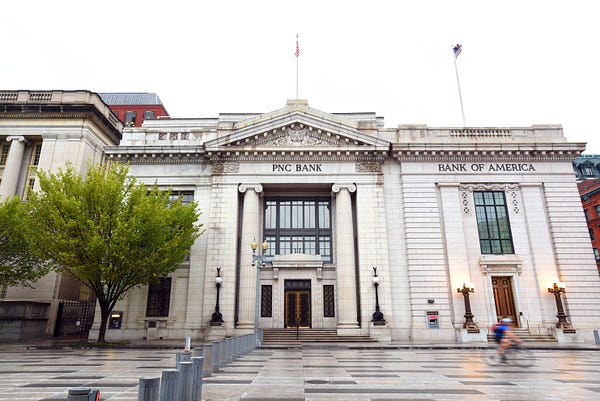Note: The main content in the post was contributed by my friend, CPA and CPWA,Victoria. You can follow her on Instagram and find our more about here HERE. Thank you Victoria for partnering on such a great subject!
It’s December 2021. Inflation is 6.8%, high yield savings accounts are paying.5%. What’s a girl to do?

Girl, it’s time to look at savings bonds. Specifically the Series I Treasury Savings Bonds. Do you have cash in your savings or HYSA that’s earmarked for something over a year away? Are you frustrated that it’s losing 6.75 in value each year?
Well, be set your frustrations aside, I may have a solution for you! Enter the Series I Saving Bond.
Series I Treasury SavingsBonds
The US Treasury announced that the new composite interest rate on Series I Savings Bonds would be 7.12%. This rate will be active for the next 6 months (November 2021 to April 2022). The rate will reset on May 1, 2022.
You might think of savings bonds as pieces of paper your grandparents got you as a baby and you got to cash out as an adult. But in all honesty, treasury bonds have come a long way, and it’s about time we talk more about them.
Treasury savings bonds stay under the radar because they’re sold by the US Treasury. There’s no incentive for banks or financial advisors to advertise them so they don’t get a lot of marketing.
Rates on government savings bonds have been ridiculously low, for so many years, I’ve rarely given them a thought. Until now. Our Fed Chairman Friend Jerome Powell recently retired the word ‘transitory’ when talking about inflation. In other words, inflation isn't going anywhere anytime soon.
Keep reading to learn how inflation has affected the Series I Savings Bond.
How doesthis work?
A savings bond is a lending instrument backed by the US government. You lend the government X amount (by buying the bond) and they promise to pay you back X amount plus interest.
The most common types of bonds are EE bonds and I bonds.
EE Bonds pay a fixed rate of return, currently at.10% (snooze). If you manage to keep the bond for 20 years, the government will double it’s value.
I bonds (yes, the ‘i’ is for inflation) work differently.
Calculating the interest rate
There are two components to the Series I Savings Bonds that impact the stated composite interest rate:
- Fixed rate — which is fixed for the life of the bond and currently at a whopping 0%.
- Inflation rate — which is variable and will reset every 6 months over the course of the life of the bond. Right now, this rate is 7.12%.
So together, the composite rate for Series I Savings Bonds in December 2021 is 7.12% and will be until April 2022.
You earn interest on a monthly basis and it’s compounded twice a year. This means that every 6 months, the interest your bond earned, will add to the principal value of the bond.
When you redeem the bonds, the principal and interest earned will pay out directly to you.

This might actually be a great deal! How many of these can Ibuy?
You are able to purchase…
- Up to $10,000 in electronic I Savings Bonds per person, per year OR
- Up to $5,000 in paper I Savings Bonds per person, per year
In addition, you are able to use your tax refund to purchase up to $5,000 of a Series I Savings Bond in paper.
You could invest $10,000 in electronic form. Then, an extra $5,000 in paper form when you file your tax return using Form 8888 to allocate your refund to buy the bonds.
What’s the catch? How long to I have to keep my money tied up in thisbond?
The short answer is you’re required to hold the savings bond for a minimum of 1 year.
- Bonds redeemed within 5 years, will forfeit the last 3 months of interest as a “penalty”. For example, if you redeem a savings bond after 18 months, you would receive 15 months worth of interest.
- There is no penalty for bonds redeemed after 5 years, making them a great investment vehicle for those mid-term goals.
- If no action is taken, the bond will be redeemed after 30 years.
What kinda of risk isthere?
These savings bonds are backed by the US Government and are not subject to market risk. The Treasury promises you that you’ll receive your principal and interest earned when you redeem your bond. The good news is, the Treasury ALWAYS keeps it’s promises.
The way Victoria and I see it, the only risk you take on is the risk that inflation decreases and the interest you earn will decrease over time as a result.
What abouttaxes?
Well, you won’t have to worry paying taxes until the bond is redeemed.
Interest earned on these bonds are taxed at the Federal level in the year you redeem them. What’s cool is state and local income tax FREE! Not the case with interest earned in your high yield savings account — if it accumulates to over $10 in a year that is.
Additionally, you may be able to exclude federal income tax on interest earned if you use it to pay for qualified higher education expenses. Refer to IRS Form 8815 to learn more about this exclusion.

Here’s anexample
If you purchased this bond on December 1, 2021 at 7.12% and then the inflation rate plummeted and the new composite rate for May 1 and November 1, 2022 went to 0.50% (unlikely) you would still have benefited by buying the bond.
The breakdown:
From December 1, 2021 to December 1, 2022 you have $10,000 of cash in a…
- Savings account earning 0.06% — You will earn $6
- High yield savings account earning 0.50% — You will earn $50
- Treasury Savings Bond earning 7.12% between December — April and 0.50% between May — November — You will earn $313.71.
A closerlook…
- Purchase $10,000 worth of Series I Savings Bond on December 1, 2021 at a current rate of 7.12%. You earn 7.12 annually (.593% monthly) for 5 months. Hypothetically, the rate goes to 0.50% on May 1, 2022 and again on November 1, 2022.
- Over the course of December — April, you will have earned roughly $296.67 off of your $10,000 purchase.
- In May, the bond will now reflect the 0.50% annual interest rate (or 0.041% monthly). In May, you will earn $4.17.
- Interest is compounded semi-annually, therefore your principal went from $10,000 to $10,300.
- Between June — November, you will have earned roughly $30.04.
- You have now held the bond for 12 months and you want to redeem it in December 2022. You will have to forfeit the last 3 months of interest. You will receive $313.71 off of your original $10,000 investment. That’s roughly 3.14% over the course of the year.
Have we convinced you yet?

Is this right forme?
Here’s a few scenarios where these savings bonds may work for you.
- You have cash that your saving for a specific purpose for the next 1–5 years. This could be education expenses, a vacation, a pause from work, or a down payment on a home.
- You’re not interested in investing more at this time. Maybe you’re nearing retirement or looking to diversify a large portfolio.
- You’re not interested in dealing with the volatility of the stock market. But you also want to keep up with the increasing rate of inflation without a lot of risk.
Reminder about the purchase limits. If your interested in putting excess cash aside, act fast. You could purchase $10,000 in December, $10,000 on January 1, and $5,000 with your income tax refund in the spring and set aside $25,000 of savings to earn a bit more interest than your savings account.
Another reminder — the rates change on these bonds every six months. That means, after a year, you’ll want to keep an eye on your bank’s HYSA or CD rates to make sure you’re still getting the best deal.
How Do You BuyThem?
By going to the Treasury Direct website and setting up an account to purchase the Series I Savings Bonds.
Or filing Form 8888 with your tax return to buy up to $5,000 of paper I Savings Bonds using your refund.
We hope this information helped you learn about this lesser known asset class!